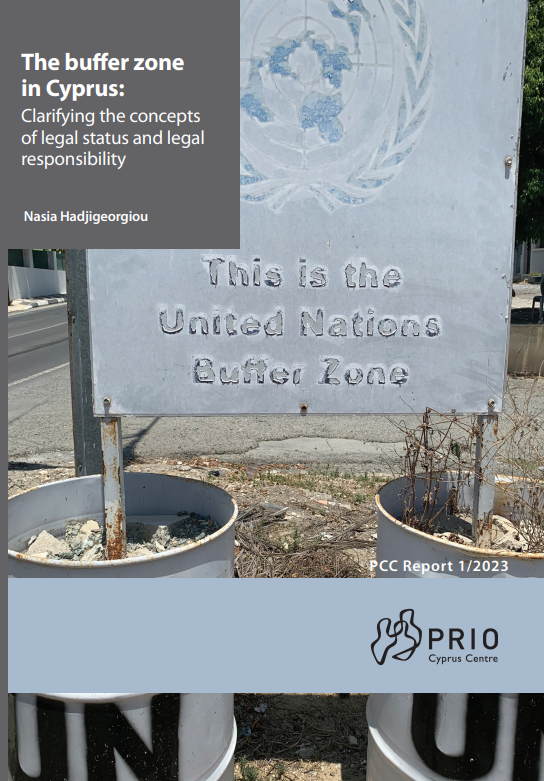
Human activity in the buffer zone in Cyprus makes it necessary, first, to develop a clear understanding of this area’s legal status and, second, to settle any lingering debates about who has legal responsibility there. The report addresses these questions in three parts.
Part 1 provides a brief description and history of the buffer zone, from its establishment in 1974 to today.
Part 2 offers an overview of the ways various stakeholders understand and perceive the legal status of the buffer zone. On the one hand, Greek Cypriots argue that the Republic of Cyprus (RoC) has legal sovereignty and effective control over the buffer zone. On the other hand, Turkish Cypriots describe the area as being effectively empty, marking a border between two states – the (internationally recognised) RoC and the (internationally unrecognised) Turkish Republic of Northern Cyprus (TRNC). Further confusing the situation is the fact that, for both the RoC and the TRNC, there is some discrepancy between their verbal declarations and practices on the ground. Finally, the UN has neither clearly nor publicly expressed its position on the legal status of the buffer zone; nevertheless, its practices in relation to the area suggest that its position differs from both the Greek Cypriot and the Turkish Cypriot ones.
Part 3 delves into a more practical question, namely determining who exercises jurisdiction, and therefore who has legal responsibility, in the buffer zone. Building on the jurisprudence of the European Court of Human Rights, we argue that the RoC always has jurisdiction in the buffer zone and, depending on the circumstances, this may concurrently also be held by Turkey. Whether the existence of jurisdiction also translates to legal responsibility depends on the facts of each case.





